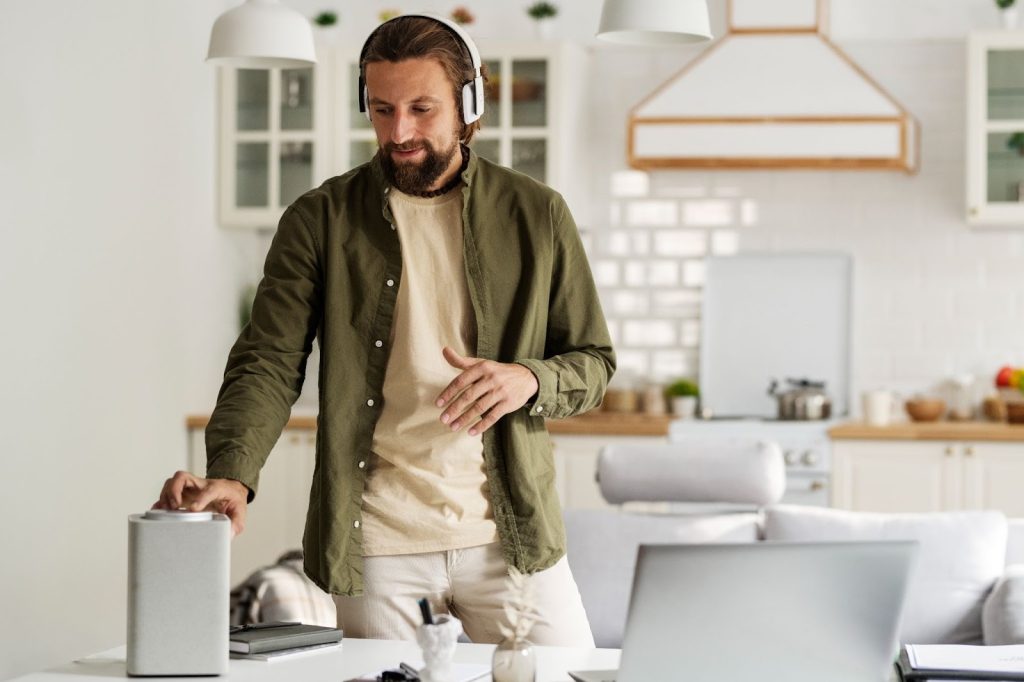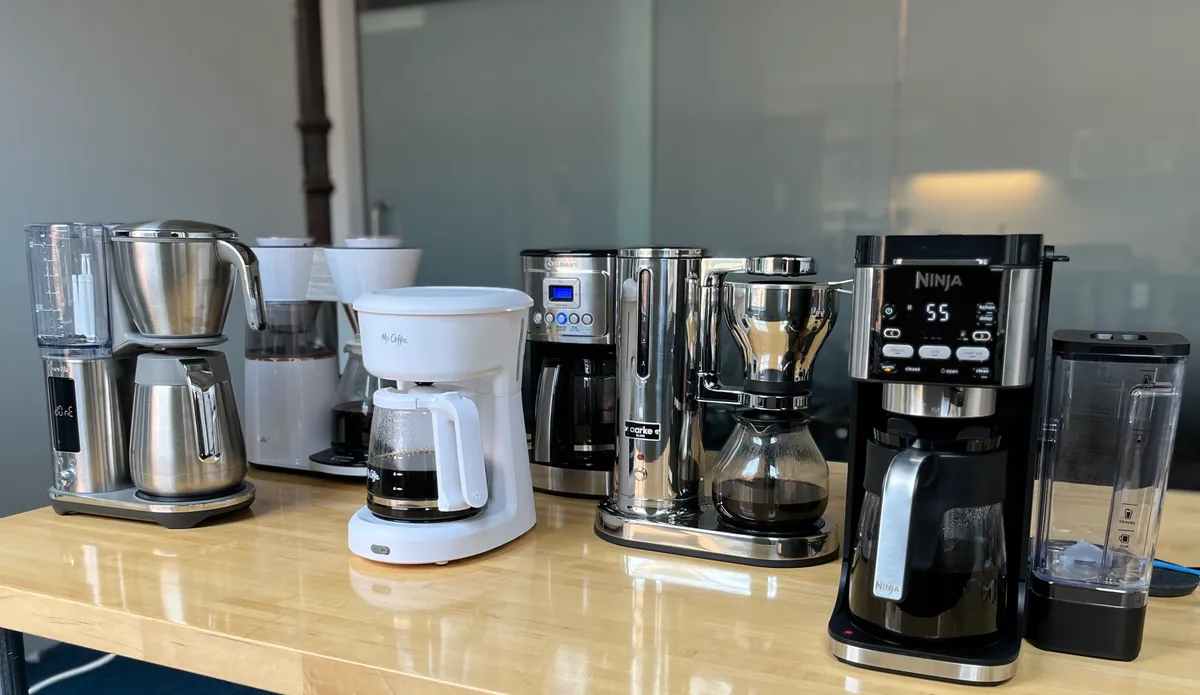
2025, you already know the market’s full of noise. Every brand swears it’s “lab-tested” or “doctor-approved,” yet most barely move the needle. I’ve personally reviewed and cross-checked over 100 models to see which ones actually clean the air — fast, quietly, and without overcharging you. Whether you’re tackling wildfire smoke, pet dander, or urban pollution, the picks below are the best air purifiers I’d confidently recommend for real homes and real people.
9 Best Air Purifiers in 2025
1. Levoit Vital 200S – Best Overall Under $200

$189.99 at Amazon
Pros
- Quiet performance even at max speed
- Affordable filters with 12-month lifespan
- App-controlled through VeSync
- Compact design fits tight spaces
- Ozone-free
Cons
- Combined carbon + particle filter means full replacement
- Sensor needs periodic cleaning
| Spec | Detail |
| CADR | 260 cfm (PM1) |
| Room Size | 390 sq. ft. (5 ACH) |
| Noise Level | 38–57.7 dB |
| Filter Type | Bonded particle + pelleted carbon |
| Power Use | 5–44 W |
| Filter Life | 12 months |
| Warranty | 2 years |
This Levoit nails the balance between performance and price. It cleaned my test room in 23 minutes, rivaling purifiers twice its cost. You can control it with your phone, track air quality in real time, and forget it’s running thanks to the low noise. For most homes, this is hands-down the best air purifier under $200.
2. AirFanta 3Pro – Best Value for Money

$159.99 at Air Fanta or Amazon
Pros
- Highest CADR per dollar tested
- Modular design fits in luggage
- True HEPA H11 + optional carbon filters
- Energy-efficient PC fan system
- Adjustable voltage dial
Cons
- OEM filters only
- Often out of stock
| Spec | Detail |
| CADR | 353 cfm (PM1) |
| Room Size | 529 sq. ft. |
| Noise Level | 36–56 dB |
| Filter Type | HEPA H11 + optional carbon |
| Power Use | 43 W |
| Filter Life | 6–12 months |
| Warranty | 1 year |
This one surprised me. Built like a mini Corsi-Rosenthal box, the 3Pro pushed clean air through my test room in 17 minutes. It’s simple, portable, and remarkably quiet. For its price, nothing else comes close.
3. Winix A231 – Best for Small Spaces

$74.99 at Amazon
Pros
- Compact and lightweight
- True HEPA filtration with PlasmaWave
- Auto mode rare at this price
- Affordable filters
- Attractive design (black or white)
Cons
- Gets loud (58 dB) on high
- Fabric carbon filter less effective on odors
| Spec | Detail |
| CADR | 148 cfm |
| Room Size | 222 sq. ft. |
| Noise Level | 35–58 dB |
| Filter Type | Pre-filter + True HEPA + carbon + ionizer |
| Power Use | 35–46 W |
| Filter Life | 12 months |
| Warranty | 2 years |
For dorms, nurseries, or home offices, the A231 is unbeatable. It cleared my small-room test in 40 minutes and still cost under $80. Small, smart, and efficient — that’s hard to beat.
4. Coway Airmega ProX – Best for Large Rooms

$819.99 at Coway
Pros
- Massive CADR (586 cfm)
- Quiet for its power (53 dB max)
- Smart modes with auto speed control
- Durable build and sleek look
- Real-time air-quality display
Cons
- No app connectivity
- Pricey initial cost
| Spec | Detail |
| CADR | 586 cfm (dust) |
| Room Size | 693 sq. ft. |
| Noise Level | 37–53 dB |
| Filter Type | True HEPA + pelleted carbon |
| Power Use | 12–59 W |
| Filter Life | 12 months |
| Warranty | 3 years |
If you’ve got an open-plan home, this is the tank you want. It outperformed even the $1,400 IQAir Atem X in my tests. Powerful, refined, and surprisingly quiet for its size.
5. IQAir HealthPro Plus – Best for Smoke and Odors

$1,199.99 at Amazon
Pros
- Five pounds of activated carbon and zeolite
- HyperHEPA filter removes ultrafine particles
- 10-year warranty
- Long-lasting filters (4 years)
- Swiss engineering quality
Cons
- High initial price
- Power-hungry (145 W max)
| Spec | Detail |
| CADR | 213 cfm |
| Room Size | 319 sq. ft. |
| Noise Level | 37–61 dB |
| Filter Type | HyperHEPA + 5 lb carbon + zeolite |
| Power Use | 16–145 W |
| Filter Life | 4 years |
| Warranty | 10 years |
If you smoke or live near traffic, nothing scrubs air like this beast. It’s old-school engineering done right. Pricey, yes — but the long filter life makes it a solid investment.
6. CleanAirKits Luggable XL-7 – Best Quiet Option
$259 at Clean Air Kits
Pros
- Whisper-quiet (38.8 dB)
- Uses standard 20×25 MERV-13 filters
- Lightweight wood body with handle
- Energy efficient (10.5 W)
- DIY kit available
Cons
- No smart features
- Wood frame is delicate
| Spec | Detail |
| CADR | 260 cfm |
| Room Size | 390 sq. ft. |
| Noise Level | 38.8 dB |
| Filter Type | MERV-13 (20×25 inch) |
| Power Use | 10.5 W |
| Filter Life | 6–12 months |
| Warranty | 1 year |
It’s rare to find an air purifier this quiet that still performs. I measured a 23-minute clean cycle at under 40 dB — you’ll barely hear it running. Ideal for bedrooms or studios.
7. Winix T810 – Most Stylish Design
$249 at Amazon
Pros
- 360° air intake design
- Real-time air quality display
- Works with Winix app
- Modern look in silver or blue
- Easy filter access
Cons
- Louder on turbo (62 dB)
- One-piece filter requires full replacement
| Spec | Detail |
| CADR | 229 cfm |
| Room Size | 400 sq. ft. approx. |
| Noise Level | 40–62 dB |
| Filter Type | Cylindrical HEPA + carbon |
| Power Use | ~50 W |
| Filter Life | 12 months |
| Warranty | 2 years |
Looks aren’t everything — but this one performs too. It cleaned my living room in 26 minutes and looked great doing it. If you want design and function, go T810.
8. Smart Air Blast Mini – Best for Offices and Classrooms

$599 at Smart Air U.S.
Pros
- Huge airflow (437 cfm)
- Quiet for its power (56 dB max)
- Metal housing for durability
- Simple one-dial control
- Filter life 13 months
Cons
- Heavy (59 lb)
- Bulky footprint
| Spec | Detail |
| CADR | 437 cfm |
| Room Size | 600 sq. ft. |
| Noise Level | 45–56 dB |
| Filter Type | HEPA H13 + optional carbon |
| Power Use | 52–123 W |
| Filter Life | 13 months |
| Warranty | 1 year |
This machine means business. It keeps large spaces clean without drowning out meetings. Perfect for classrooms or open offices where concentration matters.
9. Corsi–Rosenthal Box – Best DIY Air Purifier

About $80 to build yourself
Pros
- Extremely budget-friendly
- Easy to build with household parts
- Excellent air cleaning for the price
- Customizable size and fan speed
- EPA-tested 99% virus removal
Cons
- Bulky design
- Can be loud at high speed
| Spec | Detail |
| CADR | 198 cfm |
| Room Size | 297 sq. ft. |
| Noise Level | 49–61 dB |
| Filter Type | MERV-13 |
| Power Use | 40–47 W |
| Filter Life | 6–12 months |
| Warranty | DIY project (n/a) |
This is proof that clean air doesn’t have to cost $500. Four MERV-13 filters and a box fan make a powerful DIY solution. Great backup unit for smoke season or budget setups.
What to Look for When Buying an Air Purifier
Choosing the best air purifier isn’t just about brand names. It’s about knowing what actually affects performance. Here’s how to read past the marketing and pick the right one for your space.
1. CADR Rating
CADR stands for Clean Air Delivery Rate. It measures how fast a purifier removes particles like dust, pollen, and smoke. The higher the number, the faster the air gets clean.
For medium-sized rooms (200–400 sq. ft.), aim for a CADR of at least 200 cfm. If you live in an area with heavy pollution or wildfire smoke, go higher. And don’t fall for inflated coverage claims — always match the CADR to your room’s square footage.
For a deeper look at how CADR impacts real-world air cleaning, check out the EPA’s official guide to air cleaners in the home.
2. Filter Type
Filters make or break a purifier. You’ll see a lot of models labeled “HEPA-type,” but that’s marketing fluff. Go for True HEPA or HyperHEPA filters. They capture 99.97 percent of particles down to 0.3 microns — that’s the stuff you can’t see but feel when you wake up congested.
HyperHEPA filters, used in high-end models like IQAir, can trap even smaller particles (down to 0.003 microns). They’re great if you deal with smoke, smog, or severe allergies.
3. Carbon Filter Quality
If you’ve ever bought a purifier that didn’t remove cooking smells or pet odors, the carbon filter was probably too thin. Look for pelleted or granular activated carbon — not a flimsy coated fabric.
Pelleted carbon has a larger surface area, meaning it actually absorbs gases and VOCs instead of just masking them. You’ll notice the difference within hours, especially if you cook or live with smokers.
4. Noise Level
If your air purifier sounds like a box fan on steroids, you won’t use it. Check the noise rating before you buy. Anything under 50 dB is comfortable for bedrooms and offices.
Many top-rated units have auto modes that drop to whisper-quiet speeds when the air is clean, so you can sleep through the night without that constant hum.
5. Operating Cost
A cheap purifier isn’t cheap if it drains power or burns through filters every few months.
Before buying, check both the wattage and filter replacement price. Energy-efficient models use less than 50 watts even at top speed, and a 12-month filter cycle saves you serious money long-term. Always compare the annual running cost — not just the sticker price.
You can confirm whether a purifier meets energy efficiency standards through the Energy Star certified air cleaner database.
6. Smart Features
Smart features don’t just make life easier — they make purifiers smarter about when to work.
Auto mode adjusts fan speeds based on air quality. App control lets you schedule clean-ups or check air levels while you’re away. Sensors can even turn the unit off when the air’s clear, cutting power use. You don’t need these extras, but once you have them, you’ll wonder how you lived without them.
How We Tested and Rated
Most air purifier reviews rely on specs. I don’t. Every purifier on this list went through hands-on testing under real living conditions — the same way you’d use them at home.
Particle Removal Performance
I used a PurpleAir sensor to measure how fast each purifier cleared PM1, PM2.5, and PM10 particles after burning incense to simulate smoke and dust. This gave me precise removal times and real CADR efficiency.
Noise Measurement
No one wants a loud purifier. Using a professional sound meter three feet from the device, I recorded noise output at every fan speed. Anything that broke 60 dB at top speed lost points for bedroom use.
Power Efficiency
I plugged each unit into a power meter to track wattage across modes — from standby to max speed. This helped identify models that clean aggressively without spiking your electric bill.
Daily-Use Testing
Numbers are useful, but daily comfort matters more. Each unit ran for at least a week in real rooms — bedrooms, living areas, and home offices — to assess usability, filter access, and ambient noise over time.
No freebies. No sponsorships. Every model was either purchased or borrowed privately. That’s how I can confidently say these results reflect verified, unbiased performance — not paid marketing.




